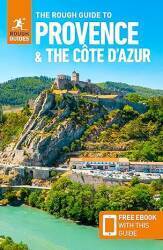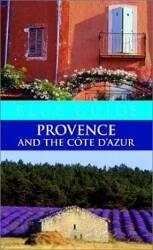
Papal Corruption
The Spectacularly Corrupt Popes of the Middle Ages
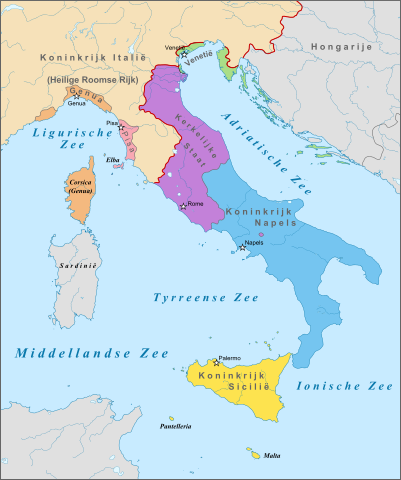
Map of the Italian peninsula in 1300, showing the Kingdom of Naples in blue, the Papal States in purple, the Kingdom of Sicily in yellow, and the smaller independent states of Venice, Pisa, and Genova.
The Papacy in the Middle Ages was very different from what it is today. We're visiting Avignon, and trying to figure out why the Roman Catholic church leadership relocated to Avignon for much of the 14th century. And, why there were two competing Popes for a while, and then three Popes at once. It was because of the politically active and morally corrupt Papacy of the Middle Ages.
The Roman Empire had collapsed through the late 5th century. The barbarian leader Flavius Odoacer deposed Romulus Augustulus in 476, ending the rule of the last Western Roman Emperor.
The peninsula of Italy was divided up between several small kingdoms and feuding city-states. There wasn't a unified nation of Italy until the Risogimento completed assembling the Kingdom of Italy in 1871
Byzantine Emperor Justinian I conquered the Italian peninsula in the Gothic War of 535-554, and appointed the next three Popes. From then until 752, all Popes were approved by the Byzantine Emperor in Constantinople.
In 756 the Frankish King Pepin III gave land to the current Pope and invaded northern Italy to drive out the invading Lombards. This land, the Papal States, gave temporal power to the Pope. And, it provided reasons for secular leaders to meddle in Papal appointments.
In 800, Pope Leo III crowned the Germanic leader Charlesmagne as Holy Roman Emperor. That line of distant German-speaking rulers began interfering in the selection of Popes. Then powerful Italian families took over.
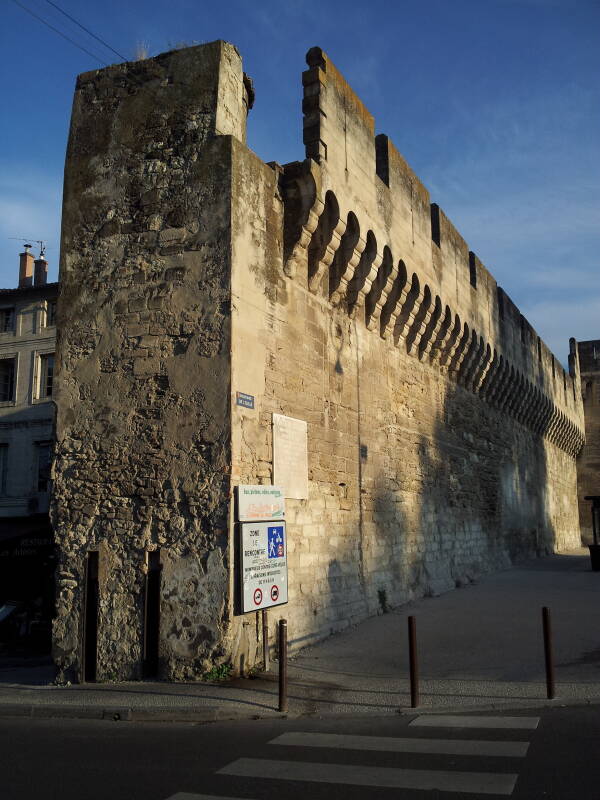
Amazon
ASIN: 0880291168
The Popes of the 10th century were spectacularly corrupt. Pope Sergius III (in office 904-911) was believed to have ordered the murder of his two immediate predecessors, Christopher and Leo V. He took Marozia of the Theophylacti family as a concubine when she was 15. Their illegitimate son later became Pope John XI (931-935) at the age of 20. Her son, two grandsons, two great-grandsons, one great-great-grandson, and one nephew all became Popes. But before that, Sergius was succeeded by Pope Anastasius III (911-913), who allegedly was another of Sergius's illegitimate sons. Meanwhile Marozia's mother Theodora had selected the man who became Pope John X (914-928). Some said he was her lover.
The family tree of Popes through 904-964 is a tangled mess. The Roman Catholic church calls the period the Saeculum Obscurum or Dark Age,
The official geneology on Pope John XII says that he became Pope at the age of 18. However, if it's true that he was the son of a concubine instead of his supposed noble mother, he might have been as old as 25. Still, that's young for a Pope. Writers likened the Lateran Palace, the Papal palace in Rome, to a brothel. A partisan of Holy Roman Emperor Otto I accused Pope John XII of ordaining children, incest, and violence:
Benedict, cardinal deacon, with other co-deacons and priests, said they knew that he had been paid for ordaining bishops, specifically that he had ordained a ten-year-old bishop in the city of Todi. [...] They testified about his adultery, which they did not see with their own eyes, but nonetheless knew with certainty: he had fornicated with the widow of Rainier, with Stephana his father's concubine, with the widow Anna, and with his own niece, and he made the sacred palace into a whorehouse. They said that he had gone hunting publicly; that he had blinded his confessor Benedict, and thereafter Benedict had died; that he had killed John, cardinal subdeacon, after castrating him; and that he had set fires, girded on a sword, and put on a helmet and cuirass. All, clerics as well as laymen, declared that he had toasted to the devil with wine. They said when playing at dice, he invoked Jupiter, Venus and other demons.
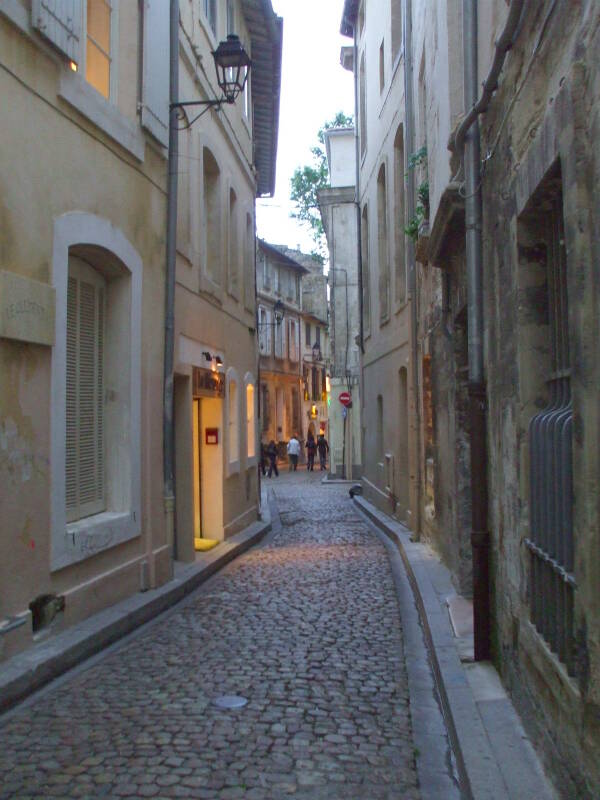
Narrow streets in the old city of Avignon.
The Crescentii clan ruled Rome and controlled the Papacy from 965 until 1012. One clan member became Pope, the others were controlled by the clan.
That led into the Tusculan Papacy of 1012-1048, when three Counts of Tusculum installed themselves as Pope.
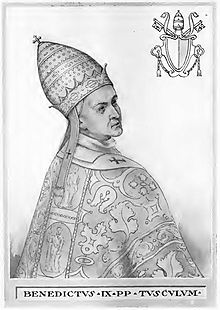
Benedict IX was the third of those. His uncles had been Pope Benedict VIII and Pope John XIX, and his great-uncle was Pope John XII (of the child-bishops and incest, above). He was about 20 when his father bribed the Romans to make him Pope in 1032. Some claimed he was just 11 or 12, but that may have been when the family selected him to become Pope once he reached the ripe age of 20. Benedict's spectacularly un-Papal behavior provoked the Romans, who drove him out of Rome and selected Pope Sylvester III as his successor.
A few months later, Benedict and his supporters returned to Rome and overthrew Sylvester. Benedict began his second term as Pope.
Well, sometimes you want a thing until you get it. Benedict wanted to marry his cousin. So, within a month of retaking the Papacy, he offered to sell the position to his godfather.
The godfather "wanted to purge the See of Rome of such an unworthy pontiff", plus there was all that money, so he paid and became Gregory VI. At least for a short time...
Benedict IX soon had seller's remorse and returned to Rome. He captured the city, deposed his godfather, and reinstalled himself on the Papal throne. This was session #3 — Benedict is the only person to have been Pope three times.
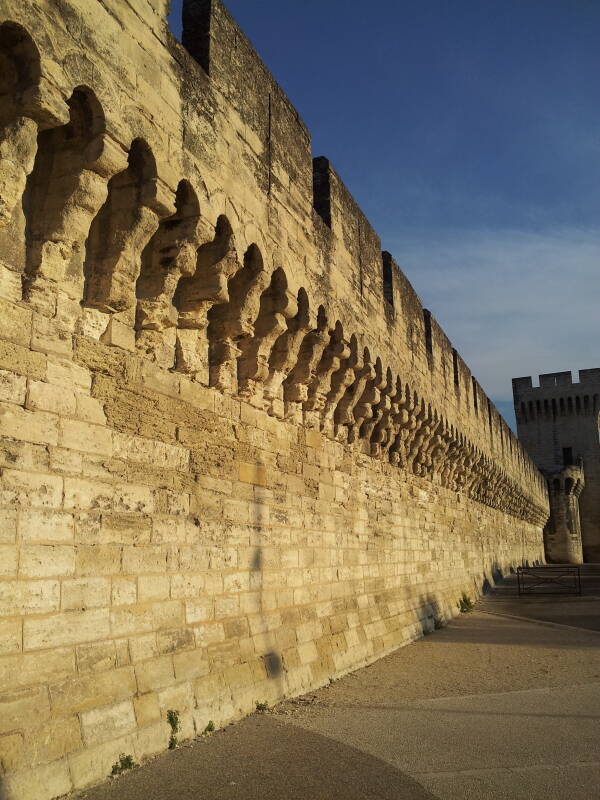
Emperor Henry III stepped in to try to straighten things out. The Council of Sutri declared that both Benedict IX and Sylvester III were deposed, and encouraged Gregory VI to resign because he had paid for the position. They crowned a German bishop as replacement, as Pope Clement II. He died less than a year later, and Benedict seized the Lateran Palace.
About nine months later, German troops drove him out
of the palace.
Damasus II
was selected as Pope.
Benedict's three terms as Pope had been:
• October 1032 – September 1044,
• April – May 1045, and
• November 1947 – July 1048
Pope Victor III (1086-1087)
wrote
of Benedict's "rapes, murders and other
unspeakable acts of violence and sodomy".
Amazon
ASIN: B01EW5JKKY
Amazon
ASIN: B01LZ01AC8
Papal history was a mess, to the point that it's still unclear how many Popes have been named John. It depends on which ones you count. Which were real Popes, and which were illegitimate Antipopes? Some of which, confusingly, had the same names and numbers. The official list of Popes was still being edited in the early 20th century.
The Bishop of Constantinople had had more than enough of the immoral Bishops of Rome. In the Great East-West Schism of 1054, the Bishop of Constantinople and the Bishop of Rome excommunicated each other.
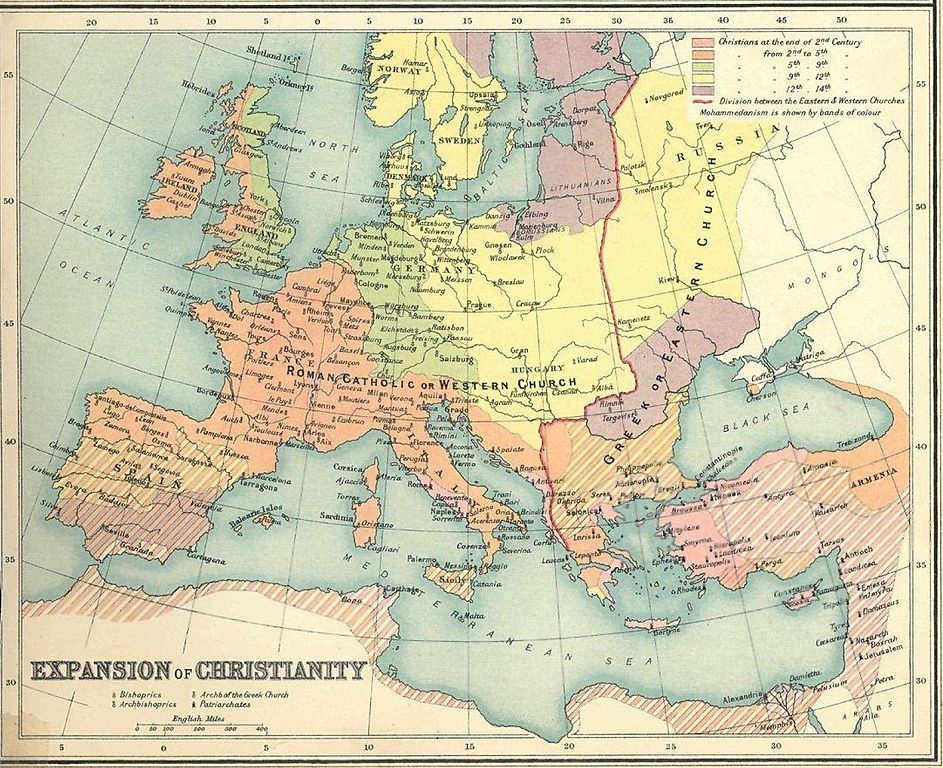
Amazon
ASIN: 0415669944
This wasn't the end of corrupt Popes installed by powerful Italian families. The Borgias installed their family members as Popes in the 15th and 17th centuries: Callixtus III (1455-1458), his nephew Alexander VI (1492-1503), who fathered many children by several mistresses, and Innocent X (1644-1655). But first, the French rulers took control of the Papacy.
Italian Popes versus French Kings
King Philip IV of France decreed that gold, silver, precious stones, and food could not be exported from France to the Papal States. This blocked a primary source of Papal revenue. He also banished the Papal agents who were recruiting in France for a new crusade in the Holy Land.
Pope Boniface VIII insisted that the Pope was a spiritual monarch ruling over all Earthly kings, and that "it is necessary to salvation that every human creature be subject to the Roman pontiff." Philip IV disagreed. He responded:
Your venerable conceitedness may know that we are nobody's vassal in temporal matters.
So, Boniface excommunicated King Philip and "all persons impeding French clerics".
Philip's minister Guillaume Nogaret and a member of a powerful Italian family led an army to attack Benedict's palace at Anagni. They beat Boniface to the point of nearly killing him, then released him three days later. Then he happened to die a month later "of a violent fever". Pope Benedict responded by excommunicating the minister and Philip (again).
College of Cardinals wanted a replacement who would not be hostile toward the King of France.
The man originally known as Benedict X (1058-1059) later became classified as an Antipope, so the official Benedicts skip from #9 to #11.
The new Pope, Benedict XI, quickly un-excommunicated the King. But within a year he had excommunicated the King's minister and all the Italians involved in capturing his predecessor Boniface.
Benedict died after just eight months in office. He died suddenly and suspiciously at Perugia. King Philip's minister Guillaume Nogaret is suspected of having poisoned Benedict.
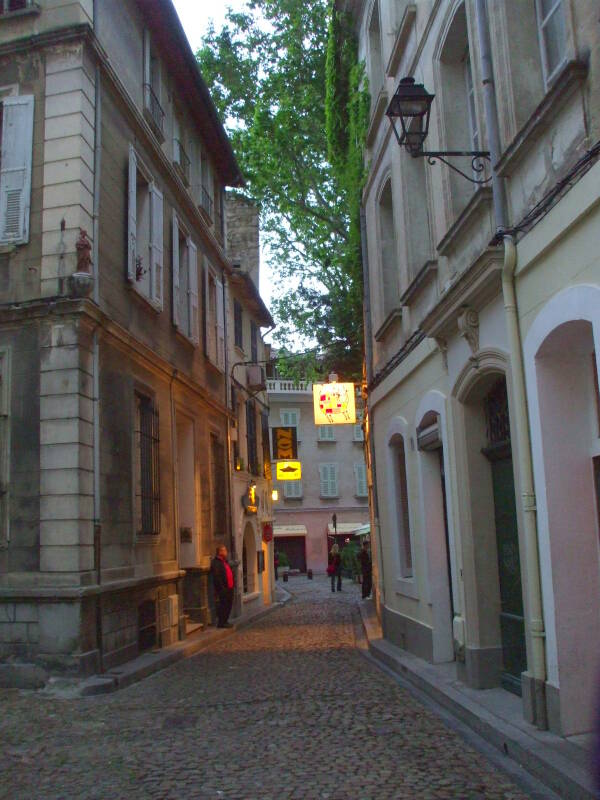
Side street in Avignon.
Continue visiting Avignon:
Or, somewhere else in France:
